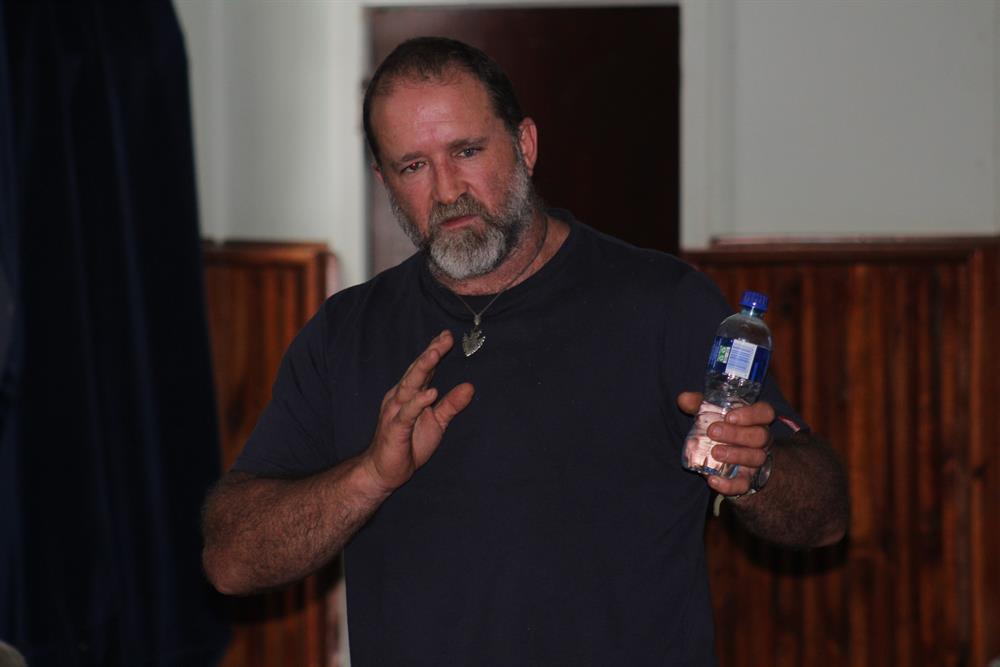Gallery
SEDGEFIELD NEWS - Has carp taken over Groenvlei? Although it might well seem to be the case with the carp population having proliferated to staggering proportions over time, Cape Nature believes it is possible to combat the problem.
The lake is situated a few kilometres outside Sedgefield, and has for residents and visitors alike over the years been a haven of beauty and tranquility. That is, until the lake started becoming so murky that some people are now referring to it as "Bruinvlei" instead.
For a while, the cause of this turbidity seemed unclear, but recently CapeNature held a public meeting to discuss the situation with the people of Sedgefield.
CapeNature, the body tasked with overseeing Groenvlei, on 6 February welcomed nearly 100 people, to the Sedgefield Community Hall where all were eager to know just what has happened to their beloved lake.
Photo gallery: Cape Nature tackles Carp problem at Groenvlei
During the meeting, which included presentations by CapeNature representatives who have been conducting research at Groenvlei, the conservation entity attributed the cause of the turbidity to an increasing carp presence combined with a resulting algal bloom, and highlighted the measures it was taking to combat the problem (see infographic). The community raised a few factors they believed could also be responsible, such as wind disturbing the water and throwing sediment up. Concerns were also raised that it could have been caused by run-off from the wet-deck timber storage and preservation system at PG Bison’s Ruigtevlei plantation.
CapeNature agreed that the wind could possibly be a contributing factor, but negated the plantation notion as there is no link between the underground water adjacent to the wet decks and Groenvlei.
All in all, the meeting was generally constructive, and both parties – the public and CapeNature – walked away having gained valuable insight and input from one another.
About Groenvlei
- Of the five large brackish coastal lakes in the Southern Cape, Groenvlei is the only one disconnected from the sea. It is also one of eight unique freshwater lakes in SA.
- The lake covers an area of 359ha, of which 245ha comprise open water with the remaining 124 hectares made up of a reed collar around the lake.
- The lake is only 2.2m above sea level, with the bottom falling slightly below.
- The lake is about 3.7km long and 0.9km wide.
Groenvlei’s fish community
- The lake has two small species of indigenous fish – estuarine round-herring and the Cape silverside.
- Several species of alien fish were introduced into the lake by the then-Cape Division of Inland Fisheries prior to 1960.
- Largemouth bass and Mozambique tilapia were introduced for angling, bluegill sunfish as a fodder fish, and mosquitofish to control mosquitos.
- Until recently, the fish community was stable and there was a healthy coexistence between the indigenous and alien species
A little bit about carp and their impact
- They are listed as one of the world’s 100 worst alien species.
- Carp are indigenous to eastern Europe and northern Asia, but are typically found in a wide range of habitats due to their immense adaptability.
- Carp are able to extend their breeding season to up to nine months if needed, and have a relative fecundity of 100 000 to 300 000 eggs/kilogram. A large female can produce over a million eggs in a season.
- They are benthivores that feed in sediments to a depth of about 12cm by sucking up mud from the bottom soil, ejecting it, and selectively consuming items while they’re suspended.
- They are typically introduced for angling, but also for fish farming.
- Carp increase nutrients in the water column by sediment resuspension and by excretion. This is believed to result in an algal bloom.
- They negatively affect aquatic plant abundance, potentially leading to a decline in biological diversity.
Carp at Groenvlei
- Carp were illegally stocked in Groenvlei in the 1990s.
- There is an estimated 160 tonnes of carp in Groenvlei (60 000 fish).
- They have led to a fish die-off because of declining water quality.
- They have led to the collapse of a once outstanding bass fishery.
- Their presence is causing poor turbidity due to algal blooms.
Combatting the problem
- CapeNature has considered several options to deal with the problem, and after analysis they decided on gill nets and bow hunting as they are the most effective while minimising impact on indigenous fish.
- CapeNature is busy compiling a Groenvloei master plan to fight the problem.
- A landscape operational task team has been established as well as a Groenvlei carp scientific forum.

'We bring you the latest Sedgefield, Garden Route news'
















